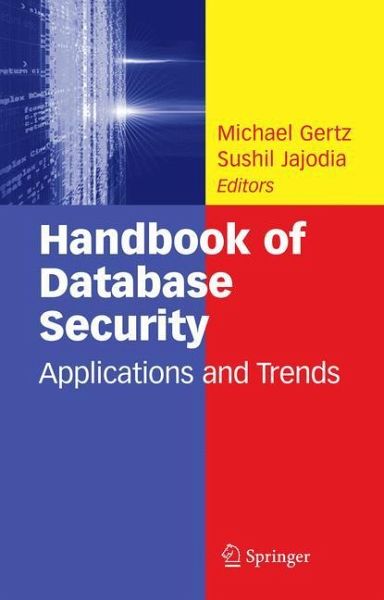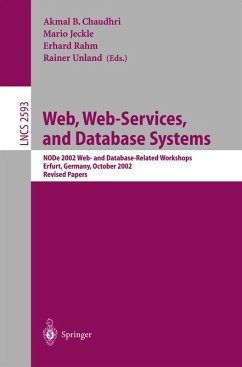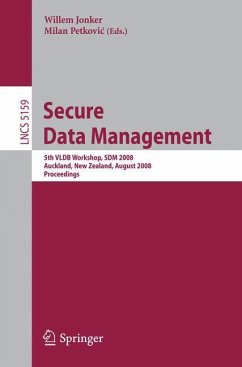
Handbook of Database Security
Applications and Trends
Herausgegeben: Gertz, Michael; Jajodia, Sushil
Versandkostenfrei!
Versandfertig in 1-2 Wochen
82,99 €
inkl. MwSt.

PAYBACK Punkte
41 °P sammeln!
Handbook of Database Security: Applications and Trends provides an up-to-date overview of data security models, techniques, and architectures in a variety of data management applications and settings. In addition to providing an overview of data security in different application settings, this book includes an outline for future research directions within the field. The book is designed for industry practitioners and researchers, and is also suitable for advanced-level students in computer science.
Motivation for the book Database security has been gaining a great deal of importance as industry, military, and government organizations have increasingly adopted Internet-based techno- gies on a large-scale, because of convenience, ease of use, and the ability to take advantage of rapid advances in the commercial market. Along with the traditional security aspects of data integrity and availability, there is an increasing interest in research and development in data privacy. This is because today's often missi- critical databases no longer contain only data used for day-to-day processing by organization; as new applications are being added, it is possible for organizations to collect and store vast amounts of data quickly and ef ciently and to make the data readily accessible to the public, typically through Web-based applications. Unfor- nately, if security threats related to the integrity, availability, and privacy of the data are not properly resolved, databases remain vulnerable to malicious attacks and - cidental misuse. Such incidents, in turn, may translate into nancial losses or losses whose values are obviously high but dif cult to quantify, e. g. , the loss of the public's trust in the data management infrastructure and services offered by an organization. In assembling this handbook, we have had a twofold objective: rst, to provide a comprehensive summary of the results of research and development activities in various aspects of database security up to this point, and second, to point toward directions for future work in this important and fruitful eld of research.














